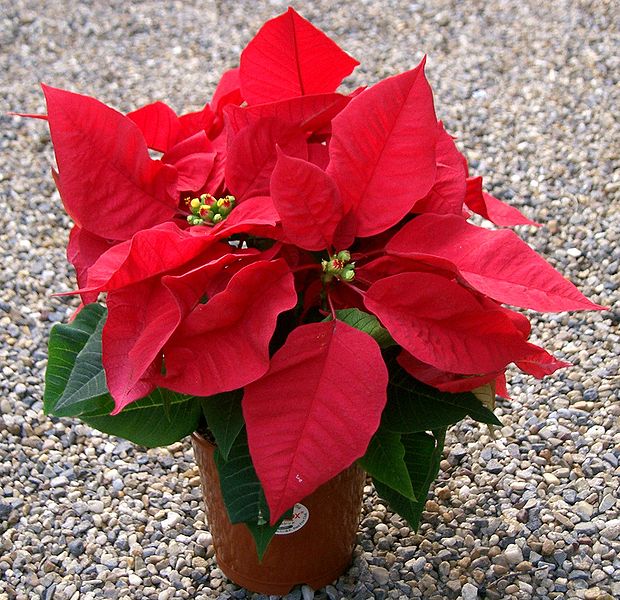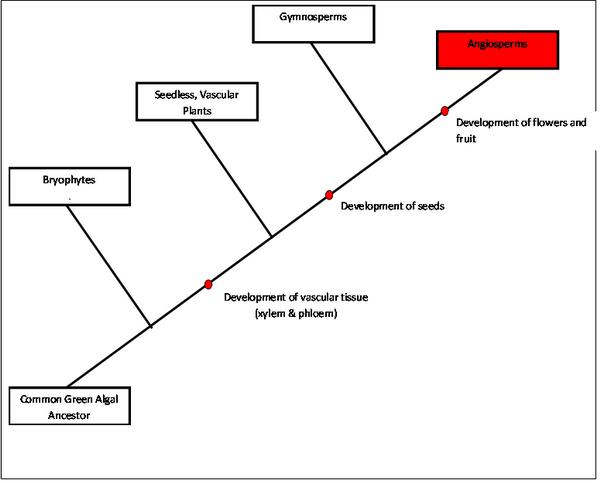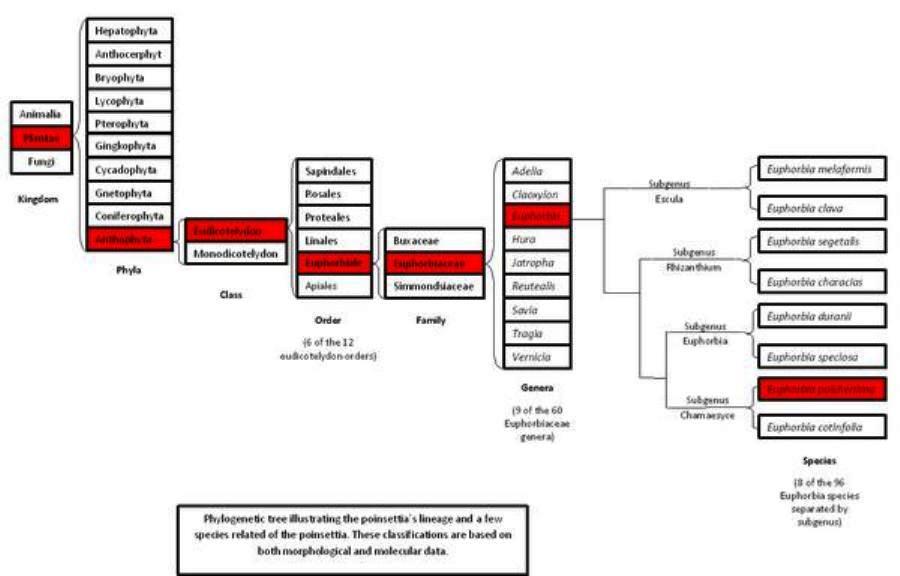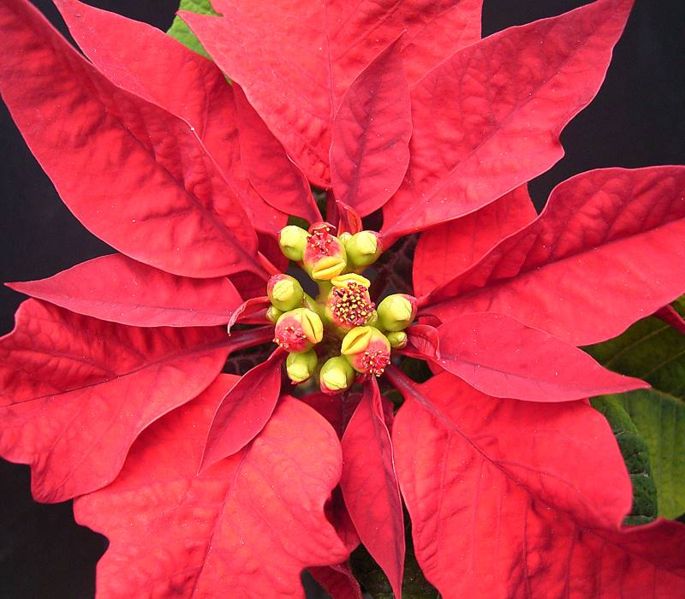Domain Eukarya:
Has cells with membrane bound organelles, DNA in the form of chromosomes and found within a "true" nucleus
Kingdom Plantae:
Nonmotile, displays alternation of
generations, multicellular gametangia, cell walls made of cellulose

Phylum Anthophyta:
Produces flowers and fruit, specialized pollination, endosperm to nourish the embryo
Class Eudicotyledones:
Develops with two cotelydons in embryo, netlike veins in leaves,flower parts in multiples of four or five
Order Euphorbiales:
Terrestrial herbs, shrubs, or trees with simple pinnating leaves, schitzocarp capsules, and produces a milky sap
Family Euphorbiaceae:
Terrestrial herbs, shrubs, or trees with simple pinnating leaves, schitzocarp capsules, and produces a milky sap
Genus Euphorbia:
Miniature inflorescence (cyathium), flowers enclosed by cup-like involucre, lack of true petals, produces a poisonous milky sap, many are spurges
Species Euphorbia pulcherrima
 Euphorbia pulcherrima
belongs to the phylum anthrophyta, the most complex group of plants. The claudistic
tree at right shows the evolution of plants from their green algal ancestor including
character (trait) development and the different phyla of plants that came about
as a result of these developments.
Euphorbia pulcherrima
belongs to the phylum anthrophyta, the most complex group of plants. The claudistic
tree at right shows the evolution of plants from their green algal ancestor including
character (trait) development and the different phyla of plants that came about
as a result of these developments.
The phylogenetic tree below shows how Euphorbia pulcherrima is classified on a larger scale based on both morphological and molecular data. The group in which the poinsettia is classified within each level is highlighted in red while the while the groups in white represent all or examples of other groups that fall within the level. You may refer back to the classification information for distinguishing characteristics (morphological) at each taxonomic level. The column farthest to the right shows how closely related other species of Euphorbia are to Euphorbia pulcherrima via the relationships between subgenera Rhizanthium, Escula, Euphorbia, and Chamaesyce which are not discussed above. To see how other plants are classified, visit USDA Plants Database.

Website Created by Christine Vick
March/April 2009
Questions? Comments? Email me at vick.chri@students.uwlax.edu
